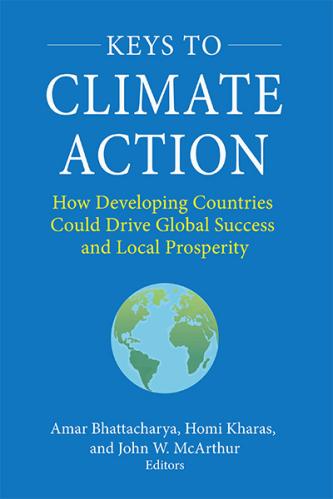Consistent with its new role as a global leader, Brazil is beginning to take decisive actions concerning climate change. President Lula recently announced the goal to unilaterally cut emissions by 39 percent from projected 2020 levels. This is an encouraging step in a country that until recently was reluctant to adopt such caps.
Brazil has been a leader in promoting renewable energy sources for decades now. But it is also true that emissions have increased dramatically during the past two decades due to rapid growth and industrialization. Announcing an emissions target will certainly improve the chances of success in the process of climate change negotiations.
But there are challenges, too. The projected 2020 levels are derived from a model that uses past emissions (last measured in 1994) and extrapolates them given expected growth. These projections provide a business-as-usual trajectory of greenhouse gas emissions (GHG). Under those assumptions, two-thirds of the reduction from the projected 2020 levels will come from a decline of deforestation and degradation (the remaining one-third will come from agriculture and logging). The manufacturing and transport sectors will make negligible contributions.
Using outdated measures of emissions (there is no data during the last 14 years) makes the announcement less effective. The reason is that GHG emissions are now much higher than that in 1994 in manufacturing, transport, agribusiness and energy industries. For example, the auto industry has doubled output from 1994 to 2008, while deforestation has fallen to 7,000 sq. km. per year from close to 21,000 sq. km. Of course, it is much more likely to meet an aggressive reduction when the benchmark level is from 1994 rather than 2009. In some sense, today’s lower emissions in the area of deforestation make it possible to reach the 2020 goals without much additional effort. But the opposite is true in transport and energy industries as output and emissions in these sectors have increased significantly. Over the last eight years. Most of the new electricity added to the Brazilian grid came from fossil fuel-fired power plants. However, in these cases there are no clear government goals or caps.
All this adds to the fact that depending on the data used for the projections, the announced policy could represent a reduction between 10 and 20 percent of 2005 emissions only. The U.S. position—to reduce its emissions by approximately 17 percent from 2005 levels by 2020—is similar.
But Brazil’s position generates other concerns, too. Half of the reduction in emissions comes from curbing deforestation and forest degradation—mostly in the Amazon Basin. Brazil calls for a giant fund financed by donations from industrialized countries to help cover the costs associated with more effective controls on deforestation. This ambitious undertaking cannot succeed without a market-based approach that changes the economic incentives associated with changes in land use or the way agricultural output is produced. These cases, as in the manufacturing and transport sectors, require economic instruments such as taxes and cap-and-trade measures.
Notwithstanding all these problems, after years of rejecting the idea of committing to a specific emissions goal, Brazil has finally decided to present a quantifiable and verifiable mitigation action at Copenhagen. Once the diplomats officially announce the target, Brazil will become accountable for it. The country will have crossed a point of no return. Whether it is legally binding or not, and whether it is a large or small effort, is less important. What is significant is that Brazil has decided to adopt an important principle, leading other emerging markets in the right direction.



Commentary
Op-edClimate Change and Brazil: Are Unilateral Actions More Effective?
December 2, 2009